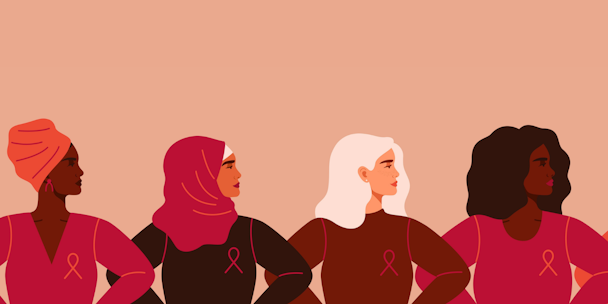How influencers can chart a new course for women’s health awareness
Social influence isn’t new, and women have been using it for decades to discuss and educate on their own health and wellbeing. Here Claire Gillis of VMLY&Rx explains how influencers now have an incredible opportunity to be the face of the women’s health movement – if they get it right.

Claire Gillis explains how influencers have an opportunity to be the face of the women’s health/ Image via Adobe Stock
When Betty Ford shocked the world by talking openly about her radical mastectomy in 1974, US breast cancer cases suddenly went up by 15% because so many women went for mammograms. The media called it the ‘Betty Ford Blip.’ Today we might recognize it as influencer marketing. It shifted the dial for breast cancer awareness and is a fitting inspiration for Women’s History Month.
Nobody talked about their cancer diagnosis in the early 1970s. But when the First Lady dared to do it, the pendulum swung – paving the way for more open discussions about health. It lit the touchpaper for health advocacy that’s burning bright almost 50 years later.
Today, influencer marketing is growing rapidly – tipped to become a $16.4bn industry in 2022, up $15bn from 2016. But, as Betty Ford’s story shows us, social influencers aren’t new – they’ve been around forever. And some of the most powerful have been women.
History is full of women who have changed health for the better. However, rather than celebrate the giants who have advanced healthcare through the power of science, I’d like to spotlight ‘everyday’ women who have transformed health through the power of voice – unsung influencers whose histories are ‘HERstories’ that have galvanized health conversation.
For example, Nancy Brinker spearheaded the global breast cancer movement when she founded ‘Susan G Komen for the Cure’ two years after losing her sister to the disease. Since then, her charity has invested billions in research, community outreach and advocacy. Brinker changed the way the world talks about breast cancer, connecting and mobilizing a passionate community.
Then there’s Kris Carr, a wellness activist with incurable cancer who’s become a global role model as a ‘cancer thriver.’ Carr’s ‘Sexy, Crazy Cancer’ brand empowers women to take back their health. The results, shared online through personal stories of transformation, are inspirational.
In the UK, broadcaster Deborah James is a beacon for cancer sufferers. Diagnosed with incurable bowel cancer in 2016, Deborah talks about cancer in ways that are hopeful, realistic, graphic and authentic. She’s transformed bowel cancer awareness.
These women are the definition of ‘everyday influencers’: influencing where it matters, every single day. Their impact highlights how trusted voices can connect communities and build bridges into lives, which provide help and hope.
It’s no surprise that influencer marketing is surging, creating human connections that inspire and persuade. It’s certainly powerful in health. But peer endorsement isn’t enough: there are pitfalls at every turn, no matter what sector you are in. To maximize the opportunity, remember to walk yourself through these basic steps:
-
Focus on strategy: define realistic goals, specific deliverables/metrics and clear rules of engagement. Goals should be driven by a deep understanding of what engages audiences and why. Define a clear influencer profile and anchor to it
-
Find the right influencers: vet prospects thoroughly and filter out those whose experiences aren’t aligned with your goals, no matter how big their name or reach. Influencers must be active in your community. Prep your chosen influencers comprehensively; understand their hot button issues, but also make sure they understand yours
-
Make it real: audiences want authenticity – truth breeds trust. Empower influencers with creative control and don’t impose guidelines that constrain their identity: that’s the reason you chose them. However, always prepare for the unexpected – e.g. a live interview that wanders off message – and put processes in place that mitigate risk and allow damage control
-
Understand the rules and follow them: like health communications, influencer marketing is regulated and increasingly under the microscope. Non-compliance can destroy a brand’s reputation. Last year, the FTC sent warning notices to 700 companies urging them to be cautious in their use of influencers. Missteps include making deceptive or misleading claims, failure to disclose connections and misrepresenting endorsers as users. Material connections between influencers and advertisers should always be clearly disclosed. Make sure your social media policy is updated and aligned with FTC regulation
-
Listen and learn: agility is your superpower. Take measured risks; test, learn and iterate... then test, learn and iterate again
As history continues to show, when women are at the forefront of an influencer strategy, great things happen.
Claire Gillis is chief executive officer of VMLY&Rx, the WPP healthcare agency that services Rx specialty pharmaceutical companies that are researching and developing breakthrough therapies.
